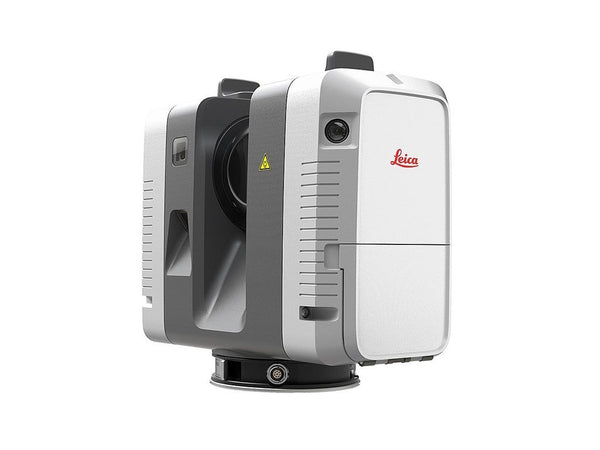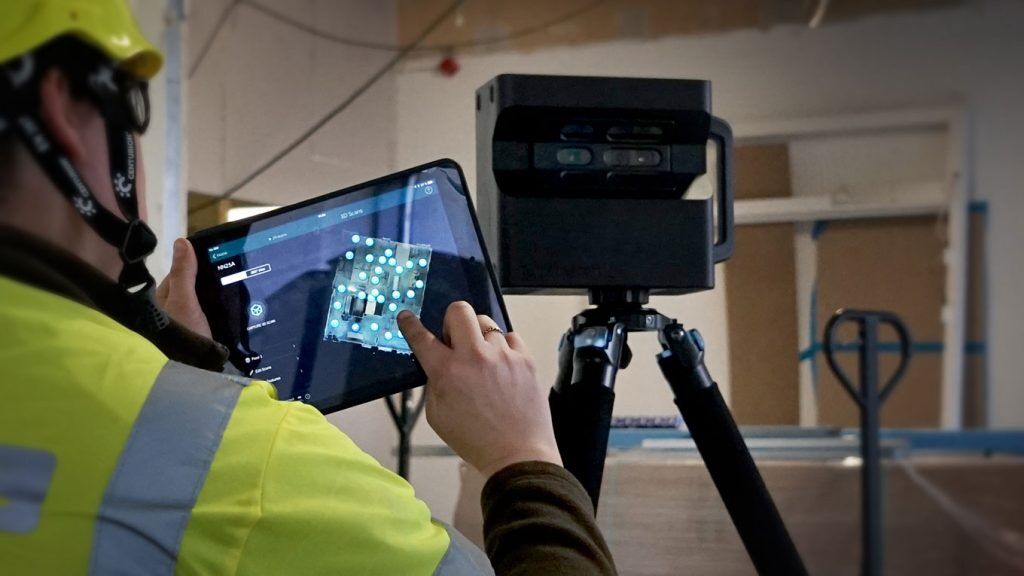A Builder’s Guide to Understanding 3D Scanning Benefits
Wiki Article
How 3D Laser Scanning Reinvents Architectural Design and Building Projects
3D laser scanning is transforming the landscape of architectural design and building and construction. This modern technology offers unmatched accuracy in capturing existing atmospheres, which facilitates better project planning and implementation. It minimizes mistakes while improving efficiency in numerous stages of advancement. The ramifications for partnership among architects, engineers, and various other stakeholders are significant. These improvements open the door to brand-new layout opportunities and cutting-edge services. What lies ahead for this evolving innovation?The Basics of 3D Laser Scanning Innovation
3D laser scanning technology may appear complicated, its core concepts are simple and transformative for architectural design. This modern technology uses laser light beams to capture specific measurements of physical structures, creating a comprehensive point cloud that stands for the scanned environment. A laser scanner produces rapid pulses of light, gauging the time it takes for the light to return, which permits the computation of distances with amazing accuracy.The resulting factor cloud can be exchanged a 3D version, supplying engineers with important visual information. This design makes it possible for specialists to examine and adjust design elements within their projects, permitting ingenious options and improved visualization. By using 3D laser scanning, designers can much better comprehend the current conditions of a website, guaranteeing that new designs harmonize with their surroundings. This combination of modern technology into architectural layout notes a substantial innovation, cultivating imagination and accuracy in the area.

Enhancing Accuracy and Efficiency in Architectural Projects
As architectural projects increasingly require accuracy and speed, 3D laser scanning becomes a crucial device in improving both accuracy and efficiency. This modern technology records countless data factors in a brief duration, developing in-depth and exact 3D versions of existing frameworks. The ability to get precise dimensions minimizes the threat of errors during the layout phase, enabling engineers to imagine their jobs with unequaled clearness.The fast information collection procedure minimizes the time spent on-site, making it possible for teams to focus on analysis and style renovations. With real-time information accessibility, modifications can be made promptly, promoting a much more structured operations. The assimilation of 3D laser scanning right into architectural techniques not just improves dimension precision but likewise boosts the total task timeline, facilitating quicker decision-making. In an industry where accuracy is important, this modern technology stands as a transformative force, raising the criteria of building style and building projects.
Improving Collaboration Among Stakeholders
While standard architectural procedures typically include fragmented communication among stakeholders, 3D laser scanning fosters a more natural joint setting. By supplying precise, high-resolution information, this modern technology permits designers, customers, service providers, and engineers to run from a unified factor of recommendation. The thorough visualizations created with laser scanning remove ambiguities and misconceptions, making certain that all events have access to the very same info.This transparency boosts decision-making and urges prompt responses, as stakeholders can conveniently visualize style aspects and spatial relationships. In enhancement, the combination of 3D scanning data into Building Information Modeling (BIM) platforms further simplifies partnership, permitting for real-time updates and adjustments. Such seamless interaction not just reduces conflicts yet likewise accelerates project timelines, as all stakeholders stay lined up throughout the layout and construction phases. Ultimately, 3D laser scanning transforms standard operations right into a much more collaborative and efficient process, benefiting all celebrations included.
Unlocking Creative Opportunities in Design
By allowing engineers to picture complex elaborate information and spatial relationships, 3D laser scanning reveals creative possibilities in layout. This modern technology enables specific mapping of existing settings, enabling designers to discover cutting-edge concepts that may have previously seemed unwise. With extremely accurate information, designers can explore unconventional types and products, pressing the boundaries of conventional design.The combination of 3D laser scanning right into the style process promotes partnership among multidisciplinary groups, encouraging the exchange of ideas and enhancing creative thinking. The top article comprehensive visualizations created by this technology not just aid in recognizing possible layout challenges but likewise motivate remedies that might not have been considered. Because of this, engineers can produce more dynamic and interesting rooms that reverberate with individuals while fulfilling functional needs. Inevitably, 3D laser scanning changes the architectural landscape, encouraging developers to realize their visions with extraordinary news precision and creativity.
The Future of 3D Laser Scanning in Architecture and Construction
The combination of 3D laser scanning right into architectural layout not just enhances creative thinking yet likewise sets the phase for its advancing role in the future of design and building and construction. As technology advancements, the precision and performance of laser scanning will certainly remain to improve, allowing contractors and engineers to produce a lot more intricate layouts with accuracy - 3D Scanning. Making use of this technology in real-time data collection will certainly facilitate better decision-making, reducing mistakes and enhancing processFuture applications may consist of digital and augmented truth integrations, allowing stakeholders to visualize jobs in immersive environments. Furthermore, as sustainability becomes a concern, 3D laser scanning will support the growth of energy-efficient styles by supplying in-depth insights into existing structures. As partnership amongst different techniques comes to be even more important, the capability to share accurate 3D models will promote technology and boost job end results. Inevitably, 3D laser scanning will redefine standards in building style and building and construction practices.
Often Asked Concerns
What Is the Expense of Executing 3D Laser Scanning Innovation?

How Long Does a Normal 3D Laser Scanning Job Take?
A typical 3D laser scanning project can take anywhere from a couple of hours to a number of days, depending upon elements such as the project's dimension, intricacy, and the level of information needed for exact data capture.What Kinds Of Projects Benefit Many From 3D Laser Scanning?
3D laser scanning advantages different tasks, particularly large-scale constructions, historical reconstructions, and complex visite site remodellings. It boosts precision in measurements, minimizes mistakes, and supplies thorough information important for efficient planning and execution in architectural layout and building.
Are There Particular Software Application Programs Required for 3D Laser Scans?
Yes, certain software application programs are vital for processing 3D laser scans. 3D Scanning. Popular options consist of Autodesk Wrap-up, Faro Scene, and Leica Cyclone, each offering unique attributes customized for evaluating and envisioning checked information properly in numerous jobsJust How Does 3D Laser Scanning Effect Environmental Sustainability in Building And Construction?
3D laser scanning enhances environmental sustainability in building by decreasing product waste, making it possible for specific dimensions, and promoting effective resource usage. This technology enables better planning, reducing the environmental footprint of building and construction projects with enhanced precision and performance.3D laser scanning is transforming the landscape of building style and construction. 3D laser scanning technology may appear complicated, its core principles are simple and transformative for architectural layout. By enabling designers to imagine intricate detailed details and spatial connections, 3D laser scanning discloses innovative opportunities in style. The assimilation of 3D laser scanning into the layout process cultivates partnership amongst multidisciplinary groups, encouraging the exchange of ideas and improving creative thinking. The combination of 3D laser scanning right into building layout not only improves creativity however likewise sets the stage for its evolving duty in the future of design and building.
Report this wiki page